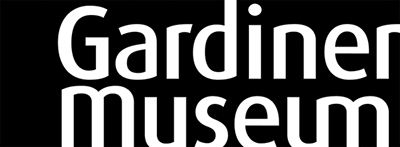Plate with William Parry’s Ships Hecla and Griper at Melville Sound
Manufacturer
Unknown Artist
CultureEnglish
Datec.1840
MediumEarthenware with blue transfer print from the “Arctic Scenery” series, inspired by William Parry (1790–1855), Journal of a Voyage of Discovery a Northwest Passage, 1821
DimensionsOverall: 1 3/16 × 10 7/8 in. (3 × 27.6 cm)
MarkingsTransfer printed Arctic Scenery on an igloo against a glacier, flanked by harpoons and a standing figure
DescriptionPlate with blue and white transfer print from Arctic Scenery series with Edward Parry's Ships, Hecla and Griper at Melville Sound, a Sledge and dog team with an exotic animal border.
Arctic Scenery
The Arctic series represents “a glorious perversion of geography," as one 1844 writer describes them in reference to the tropical animal border decoration encircling wintery scenes of sledging, hunting and ice huts series. Though back stamped with a pattern name the pottery manufacturer remains unknown. The transfer prints on these pieces were adapted as composites from engravings of Edward Parry's Journal of a Voyage for the Discovery of a North-West Passage from the Atlantic to the Pacific published in 1821 and Journal of a Second Voyage for the Discovery of North-West Passage from the Atlantic to the Pacific, published in 1824. There were numerous printed illustrations of Arctic expeditions because Arctic explorers became heroes on both sides of the Atlantic but why Edward Parry’s journal was selected to be printed on tableware is unclear. The incongruous African animals around the border are from William Jardine’s The Naturalist’s Library, a series of colour illustrated booklets printed between 1833 - 43.
Arctic Scenery
The Arctic series represents “a glorious perversion of geography," as one 1844 writer describes them in reference to the tropical animal border decoration encircling wintery scenes of sledging, hunting and ice huts series. Though back stamped with a pattern name the pottery manufacturer remains unknown. The transfer prints on these pieces were adapted as composites from engravings of Edward Parry's Journal of a Voyage for the Discovery of a North-West Passage from the Atlantic to the Pacific published in 1821 and Journal of a Second Voyage for the Discovery of North-West Passage from the Atlantic to the Pacific, published in 1824. There were numerous printed illustrations of Arctic expeditions because Arctic explorers became heroes on both sides of the Atlantic but why Edward Parry’s journal was selected to be printed on tableware is unclear. The incongruous African animals around the border are from William Jardine’s The Naturalist’s Library, a series of colour illustrated booklets printed between 1833 - 43.
Credit LineThe Barbara and James Moscovich Collection of Canadian Historical China
Object numberG13.15.45
Classifications
European CeramicsSub-classification
English EarthenwareStatus
On viewArtist / Maker: Unknown Artist
c.1840
Object number: G13.15.44
Artist / Maker: J. and T. Edwards
1840-1851
Object number: G13.15.22a-b
Artist / Maker: J. and T. Edwards
1841-1851
Object number: G13.15.23
Artist / Maker: J. and T. Edwards
1841-1851
Object number: G13.15.21
Artist / Maker: J. and T. Edwards
1841-1851
Object number: G13.15.20
Artist / Maker: Podmore, Walker and Co.
1842-1859
Object number: G13.15.11
Artist / Maker: Podmore, Walker and Co.
1842-1859
Object number: G13.15.14
Artist / Maker: Podmore, Walker and Co.
1842-1859
Object number: G13.15.15
Artist / Maker: Podmore, Walker and Co.
1834-1859
Object number: G13.15.10















